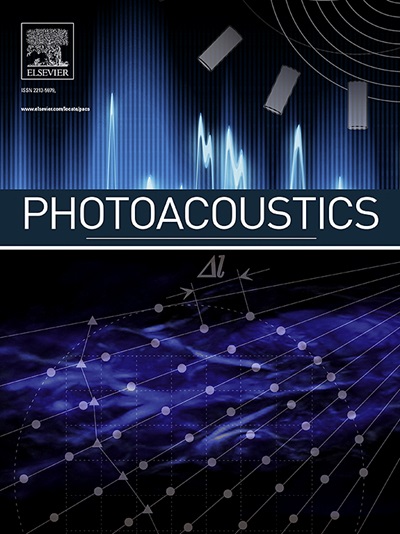Sensitive light-induced thermoelastic spectroscopy based on transmitted light amplification
IF 6.8
1区 医学
Q1 ENGINEERING, BIOMEDICAL
引用次数: 0
Abstract
This paper investigates the light-induced thermoelastic spectroscopy (LITES) based on transmitted light amplification to realize high-precision gas detection. The modulated laser beam passes through a multi-pass cell and is then coupled to an optical amplifier. The multi-pass cell reflects the laser beam 100 times, has an optical length of 16 m, and its transmitted light intensity is 1.67 mW. A narrowband fiber optical filter with a bandwidth of 0.8 nm is utilized to suppress optical noise. Based on the transmitted light amplification, the signal-to-noise ratio (SNR) is improved by a factor of 3.6. To investigate the enhancement of second harmonic (2 f) signals under weak light intensities, a fiber optical attenuator is adopted to attenuate the transmitted light intensity. While the transmitted light intensity is attenuated to 0.048 mW, a high SNR of 1823 and a minimum detection limit (MDL) of 0.110 ppm can be obtained. Hence, LITES based on transmitted light amplification enables high-precision measurements while the light intensity is only at the scale of μW. This approach facilitates a significant increase in the number of beam reflections as well as the optical length of the multi-pass cell and resonant cavity for LITES sensors.
基于透射光放大的敏感光致热弹性光谱学
本文研究了基于透射光放大的光致热弹性光谱(LITES)技术,以实现高精度气体检测。调制的激光束通过一个多通单元,然后耦合到一个光放大器。多通电池对激光束进行100次反射,光长为16 m,透射光强为1.67 mW。利用带宽为0.8 nm的窄带光纤滤波器抑制光噪声。基于透射光放大,信噪比提高了3.6倍。为了研究微弱光强下二次谐波(2 f)信号的增强,采用光纤衰减器对透射光强进行衰减。当透射光强衰减到0.048 mW时,可获得1823的高信噪比和0.110 ppm的最小检测限。因此,基于透射光放大的LITES可以在光强仅为μW的尺度下实现高精度测量。这种方法有助于显著增加光束反射的数量,以及LITES传感器的多通单元和谐振腔的光学长度。
本文章由计算机程序翻译,如有差异,请以英文原文为准。
求助全文
约1分钟内获得全文
求助全文
来源期刊

Photoacoustics
Physics and Astronomy-Atomic and Molecular Physics, and Optics
CiteScore
11.40
自引率
16.50%
发文量
96
审稿时长
53 days
期刊介绍:
The open access Photoacoustics journal (PACS) aims to publish original research and review contributions in the field of photoacoustics-optoacoustics-thermoacoustics. This field utilizes acoustical and ultrasonic phenomena excited by electromagnetic radiation for the detection, visualization, and characterization of various materials and biological tissues, including living organisms.
Recent advancements in laser technologies, ultrasound detection approaches, inverse theory, and fast reconstruction algorithms have greatly supported the rapid progress in this field. The unique contrast provided by molecular absorption in photoacoustic-optoacoustic-thermoacoustic methods has allowed for addressing unmet biological and medical needs such as pre-clinical research, clinical imaging of vasculature, tissue and disease physiology, drug efficacy, surgery guidance, and therapy monitoring.
Applications of this field encompass a wide range of medical imaging and sensing applications, including cancer, vascular diseases, brain neurophysiology, ophthalmology, and diabetes. Moreover, photoacoustics-optoacoustics-thermoacoustics is a multidisciplinary field, with contributions from chemistry and nanotechnology, where novel materials such as biodegradable nanoparticles, organic dyes, targeted agents, theranostic probes, and genetically expressed markers are being actively developed.
These advanced materials have significantly improved the signal-to-noise ratio and tissue contrast in photoacoustic methods.
 求助内容:
求助内容: 应助结果提醒方式:
应助结果提醒方式:


